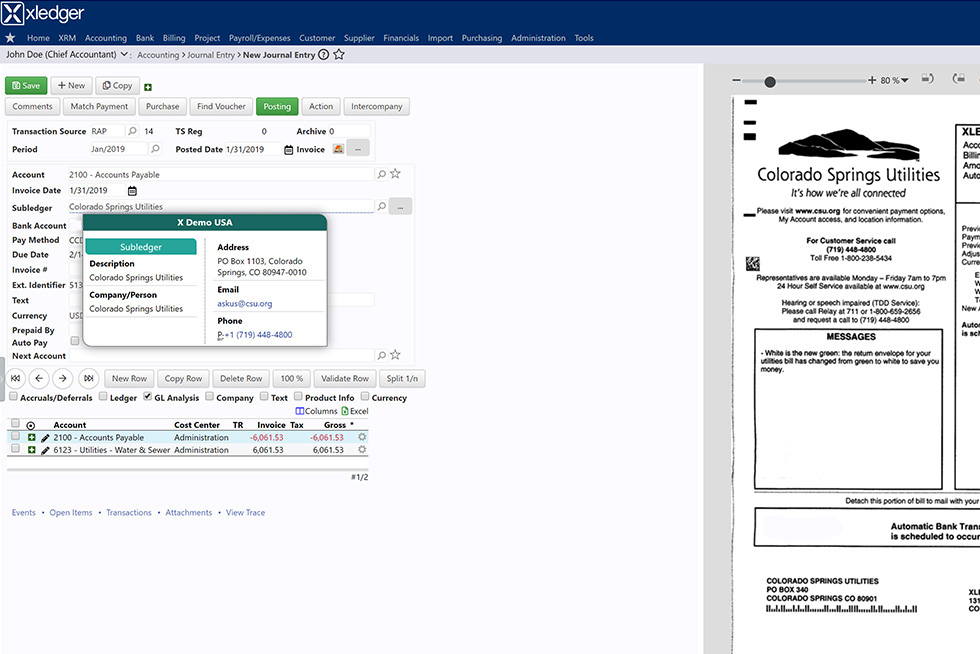From engineers to architects, project-based organizations need to move fast. Revenue depends on completion, and a firm’s performance on one contract often determines the availability of the next.
Although accounting at large will benefit, process automation could hold special promise for project accounting. If professional services firms applied RPA to even one stage in the project accounting process (say, invoicing), they would see measurable increases in efficiency and effectiveness.
But what if you could automate the entire project accounting process? Measurable improvements could become transformative change.
The following is Xledger’s strategy for doing exactly that.

I. General Automations
1. Default Rules
With Xledger, you can put in place default rules for the majority (between 95 and 99%) of business transactions. For example, Xledger will route user actions through GL accounts specified by your higher-level accountants.
2. OCR
Suppose that you receive an invoice. Xledger lets you input it one of three ways: you can scan, email, or drag-and-drop it into the system. Xledger’s OCR function will ‘read’ the document, extract relevant information, and populate corresponding data fields with key details.
3. SmartHelps
Once Xledger has ‘read’ the invoice, a feature called SmartHelps will automatically compare that invoice to the transaction history both of your organization and of all other organizations using Xledger. Based on this ML-enabled analysis, SmartHelps will provide suggested strategies for how to post your invoice.

II. Project-related Automations
4. Payment Management
Having recorded a bill, your authorized users can decide exactly when it will be paid. Once the bill has been approved, they can set it to run immediately or after a certain time interval (say, three days).
5. Time and Expense Reporting
The best way I can explain this is through an example. One Xledger customer builds and operates satellites for several European governments. Long plagued with incomplete project data, the company chose Xledger as its ERP. Xledger completed the picture of past and current projects. Now, decision-makers can access and analyze real-time project data, enabling the organization to adjust for costs and roadblocks in minutes rather than weeks.
6. Periodization
Project planning and budgeting involves a variety of prepaid expense accounts. Most ERP systems periodize these manually: they require you to go in and subtract a certain amount every month. By contrast, Xledger applies automation: for a given period, you can instruct the software to automatically subtract a given amount from a prepaid expense account.

7. Project Workflow
Xledger provides automated workflow for users at all levels of your organization. Employees working on a project can enter and submit time in Xledger. The software will convert their hours into billables, record them in the project, and then bill them to the project customer.
Meanwhile, your managers and employees will benefit from Xledger’s paperless approval process. Employees can submit, and managers can approve, any item from any device, including via Xledger Mobile.
***
With the right partner, RPA can automate every stage in the project accounting process. The resulting advantages are numerous. Organizations can drastically shorten their accounting cycle. Accountants can engage in more profitable activities like data analysis and market strategy. The risks of input and posting error plummet. Managers can finish projects faster. Executives can lead more intelligently.
From first setup to project close, Xledger equips you with market-leading automation for every stage, task, and subroutine in the project accounting process. Give me a call if you’d like to learn more.

